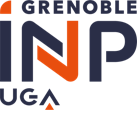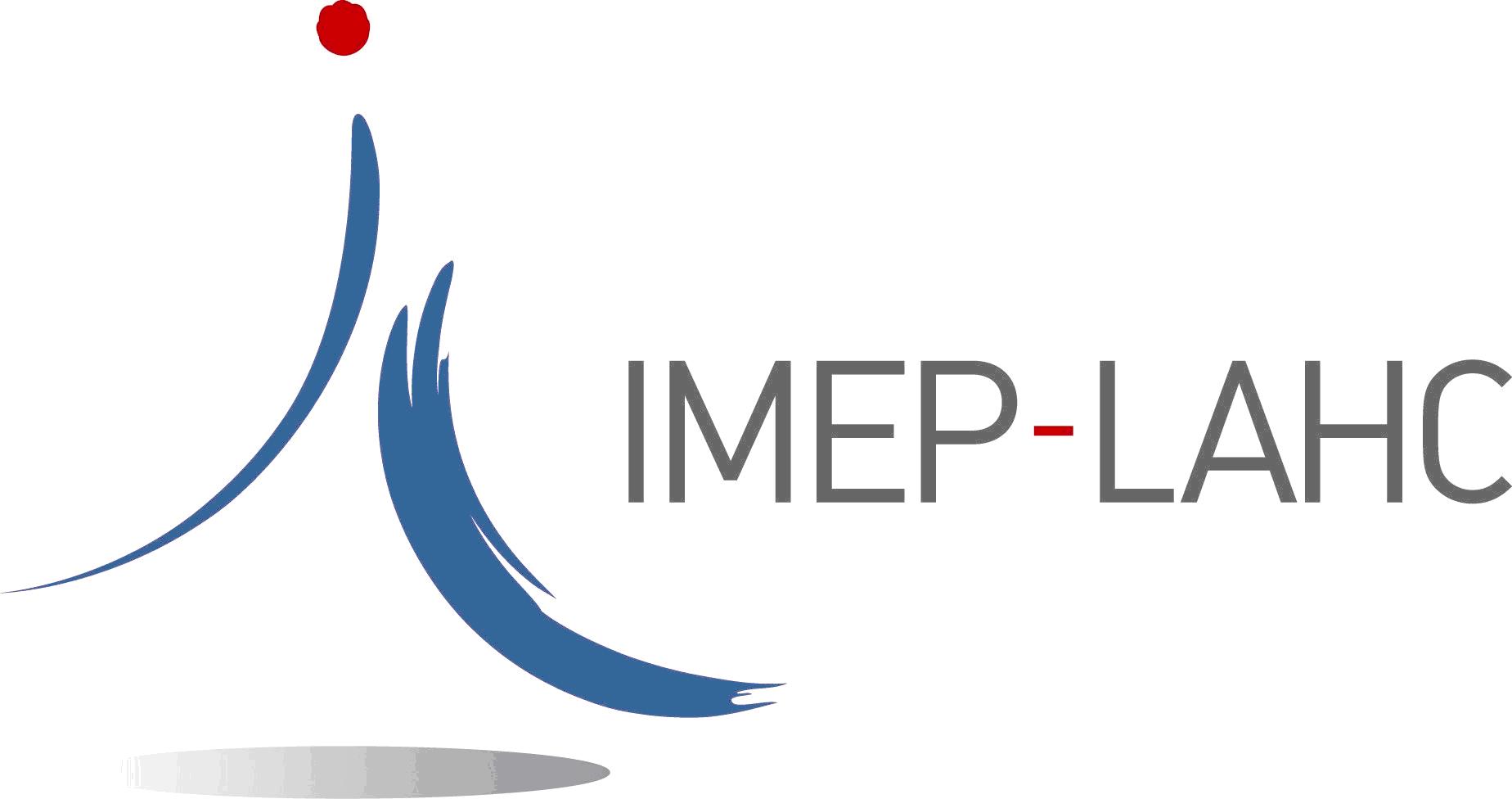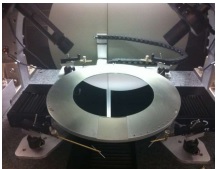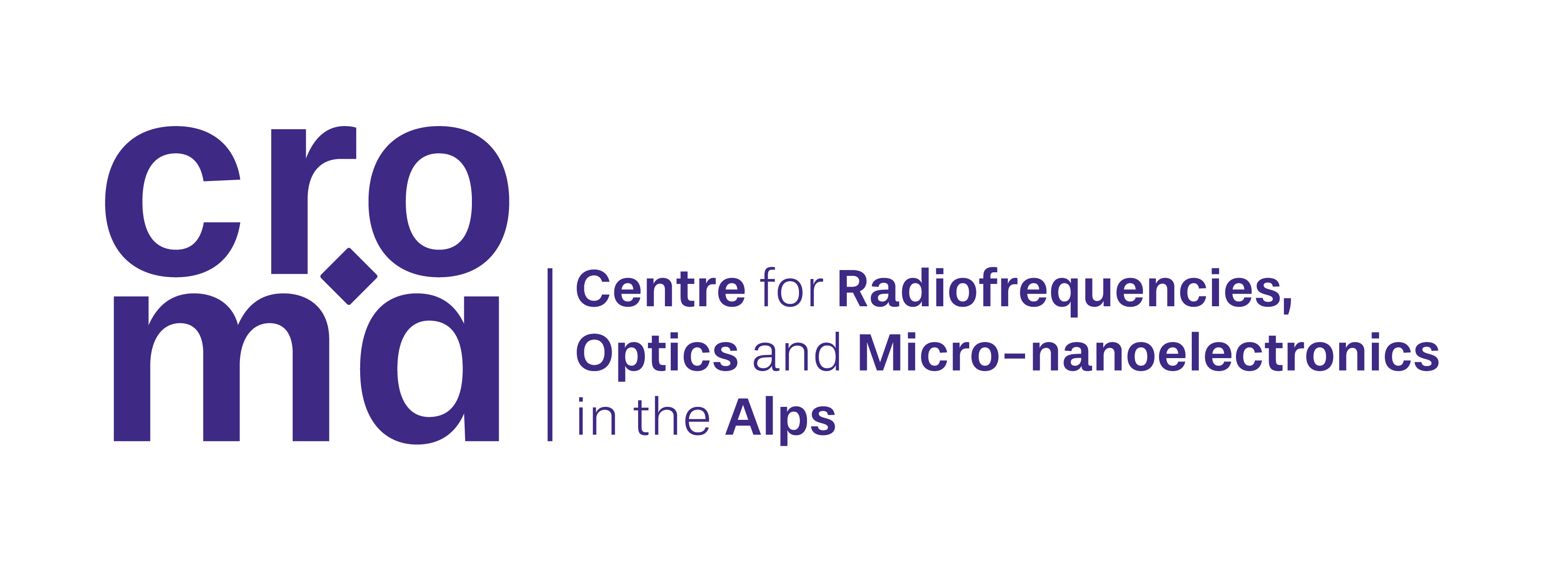All opportunities
Search...
Offers : 35
Postdoctoral study on substitution of silver and indium in solar cells
Start date : 01/10/2025
offer n° CROMA-CMNE-03-06-2025
POSTDOCTORAL :
Study on substitution of silver and indium in solar cells
1- POSITION IDENTIFICATION :
Type of contract : Postdoctoral
Category (A,B or C) : A
Contract/project period : 18 months Expected date of employment : 01/10/2025
Proportion of work : full time
Workplace : ICube, D-ESSP departement, MATISEN team
Desired level of education : has a PhD
Experience required : doctorate obtained within the last 3 years
Contact(s) for information on the position (identity, position, e-mail address, telephone) :
Thomas Fix, CNRS Researcher, tfix@unistra.fr, +33(3)88106334
Date of publication : 03/03/2025
Closing date for the receipt of applications : 01/06/202
2- RESEARCH PROJECT OR OPERATION :
In order to significantly contribute to limiting global warming, the annual production capacities of photovoltaic (PV) modules must reach values as high as 3 TeraWatt (TW) over the next decade. While PERC (Passivated Emitter and Rear Cell) technology currently dominates the photovoltaic industry, new solar cell technologies such as Si heterojunctions, TOPCon type devices, Perovskite/Si tandem, are entering the market and enabling to improve efficiency. These new technologies generally use silver (Ag)-based metal electrodes and indium tin oxide (ITO) layers. However, due to limited In and Ag resources, their presence poses major problems for the necessary deployment at TW scale. Several interesting “high TRL” approaches for Ag and In reductions have been explored in recent years. However, the progress rates of these incremental developments are far from consistent with the aforementioned TW-scale deployment and may also raise environmental concerns.
The ICube laboratory in Strasbourg and CROMA in Grenbole are engaged in a large-scale research program (ANR) with 7 other partners to propose new solutions for the substitution of silver and indium in solar cells.
As a postdoctoral researcher in this project, you will participate, in collaboration with the 7 other partners, in the development of new solutions to reduce the environmental impact of the production of future solar cells.
3-Activities :
- Description of the research activities :
The research activities will take place at two locations, the ICube laboratory (UMR 7357 in Strasbourg) and at the CROMA laboratory (UMR 5130 in Grenoble). This postdoctorate aims at fabricating and characterizing thin films and devices for photovoltaics. In particular, the electric properties of materials will be studied using standard techniques (IV, CV, Hall effect…). As well the interfaces (between the transport layer /TCO and dielectrics or semiconductors) will be evaluated for their integration into PV solar cells, by electrochemical impedance spectroscopy (admittance, noise) to determine the presence of charge, defects, interface states, tunnel/hopping/hysteresis phenomena … Moreover the electronic properties at the macro and micro scale will
be studied by AFM, scanning Kelvin probe, photoemission, surface photovoltage…
The solar cells and devices integrating transport/TCO layers developed within the project will be evaluated before and after stability tests by standard photovoltaic techniques (IV under illumination, EQE, SunVoc, …). - Related activities :
Depending on the calendar at the needs related to project deliverables the recruited candidate may participate in thin film and device fabrication before their characterizations.
4- SKILLS
- Qualifications/knowledge :
Candidates must hold a doctorate in physics or chemistry or materials or engineering within the last 3 years. Knowledge in materials science and semiconductors is necessary and demonstrated by the validation of courses/modules in those disciplines. Knowledge in photovoltaic solar cells is well appreciated. Experience in thin film growth or characterization is welcome. - Operational skills/expertise :
Candidates must be able to use common scientific software. They are advanced both in written and spoken English, validated by language certificates. Candidates must be able to write reports and present high level scientific work in French and/or English. - Personal qualities :
Candidates must be familiar with project- and team- work both locally and remotely. They must be autonomous and rigorous, be able to take initiatives and be at ease with oral and written communication.
5-ENVIRONMENT AND CONTEXT OF WORK
- Presentation of the laboratory/unity :
ICube is a joint research laboratory of the CNRS and the University of Strasbourg, with about 750 members shared at the interface between digital and physical sciences, providing a unique configuration. It is a major driving force for research in Strasbourg. Federated by imaging, its main areas of application are biomedical engineering and environmental and sustainability sciences.The CROMA laboratory is a joint research laboratory of the University Grenobles Alpes, University of Savoie Mont Blanc and CNRS, previously known as IMEP-LaHC. It is composed of three teams which are microelectronics, photonics and radiofrequencies. - Hierarchical relationship :
The recruited candidate will be supervised by Thomas Fix, CNRS researcher at ICube under the authority of ICube’s Director, and supervised by Frédérique Ducroquet, CNRS researcher at CROMA under the authority of CROMA’s Director. - Special conditions of practice (notice attached):
This position is located in a sector relating to the protection of scientific and technical potential. It therefore requires, in accordance with the regulations, that your arrival be authorized by the competent authority of the French Ministry of Higher Education and Research
- Keywords : Engineering sciences, Electronics and microelectronics - Optoelectronics, CROMA, FMNT
- Laboratory : CROMA / FMNT
- CEA code : CROMA-CMNE-03-06-2025
- Contact : frederique.ducroquet@grenoble-inp.fr
(filled) Post-doctoral Position in SiC-based-FET Biosensors
Start date : 01/02/2024
offer n° CROMA-CMNE-01-29-2024


Post-doctoral Position in SiC-based-FET Biosensors
at the Grenoble-MINATEC (Grenoble INP), France
in collaboration with FORTH Institut, University of Crete, Greece.
A post-doctoral research position in SiC-based-FET Biosensors is available starting mid-2024.
The work aims at the optimization of SiC-based nanowire FETs (NWFETs) and ion sensitive junction FETs (ISJFETs) for biosensing applications (pH, protein…). SiC is a biocompatible semiconductor with a high chemical inertness and is an interesting alternative to the commonly studied Si NWFETs.
The post doc position is for 1 year of employment, with the possibility of extension/applying for further funding.
The work will be principally performed within 2 Grenoble laboratory partners in this project: CROMA (ex IMEP-LaHC) and LMGP, both located at Grenoble-MINATEC, as well as within one lab from Greece (Microelectronics Research Group/FORTH and University of Crete) in the framework of the BioSiC project.
The successful applicant should be familiar with both cleanroom processing, chemical surface functionalization, electrical and electrochemical device characterization and have good communication skills.
The work is funded by the Auvergne-Rhone Alpes region (AURA) and FORTH Institute.
Availability: As soon as possible.
For further information, please contact:
Konstantinos ZEKENTES, konstantinos.zekentes@grenoble-inp.fr
Valérie STAMBOULI , LMGP , valerie.stambouli-sene@grenoble-inp.fr
Edwige BANO , CROMA (ex-IMEP-LaHC) , edwige.bano@grenoble-inp.fr
- Keywords : Engineering science, Electronics and microelectronics - Optoelectronics, CROMA, FMNT
- Laboratory : CROMA / FMNT
- CEA code : CROMA-CMNE-01-29-2024
- Contact : edwige.bano@grenoble-inp.fr
- This Post-doc position has been filled. Thank you for your interest
(filled) Characterization of high-k dielectric/silicon interfaces using second harmonic generation (SHG)
Start date : 08/01/2024
offer n° IMEPLAHC-Postdoc 12-01-2023
 2 YEARS POSTDOCTORAL FELLOW POSITION
2 YEARS POSTDOCTORAL FELLOW POSITION 
Characterization of high-k dielectric/silicon interfaces
using second harmonic generation (SHG)
Starting date: January- February 2024
Within the IPCEI (Important Project of Common European Interest) on Microelectronics, we work (in collaboration with STMicroelectronics) on the development of a non-destructive characterization method adapted for interfaces between passivation high-k dielectrics and silicon. The
method, based on nonlinear optics, consist in measuring the second harmonic generated (SHG) in the sample; for centrosymmetric materials,
this signal is mainly due to the electric field present at the interface, which is related to interface trap density (Dit) and fixed charges in the oxide (Qox)1

The post-doc will be in charge of development of protocols to identify and separate the two contributions. One of the methods exploited consists in adding an external electric field during the SHG measurement, which should modify the Dit response. Starting from industrial wafers with high-k dielectrics on silicon, a transparent conductive layer (ITO) must be deposited to fabricate MOS capacitors with a transparent gate that are adapted for both SHG under external voltage and
capacitance versus gate voltage measurements. A wide panel of parameters (e.g., laser power, input and output wave polarisations, external electric field …) can be varied. The experimental methodology will be completed by simulation segments on our home-made simulator2 that allows calculating the SH generated in a certain multilayer. The technique can also be tested on other samples/substrates available.
We are offering:
- 24-month full-time job in a renowned research laboratory 3, in Grenoble, the French Silicon Valley.
- A multidisciplinary topic, joining together non-linear optics and semiconductor device physics, with a high potential of dissemination (top-ranked journals and conferences)
- A combination of experimental and simulation work
- A position in a dynamic environment: 2 associated professors and 2 support engineers are involved in the topic. 1 or 2 interns will also join us, during your stay
- The occasion to work in collaboration with a large microelectronics company: the project, funded by IPCEI-ME, is supported by STMicroelectronics .
The successful candidate has:
- A PhD in optoelectronics/semiconductors physics
- A good level in English and/or French
- Willing to progress, self-motivation, autonomy
- Good interpersonal skills.
Contacts for more information and application (CV – with publications list, motivation letter, …):
Irina IONICA, Irina.Ionica@grenoble-inp.fr
Lionel BASTARD, Lionel.Bastard@grenoble-inp.fr
————————————————————————————————————————————————————-
1 B. Obeid, L. Bastard, V. Aubriet, K. Courouble, D. Dutartre, I Ionica, “Characterization of Passivation Dielectrics on Silicon
Through Second Harmonic Generation: Effect of Fixed Charge”, ECS Transactions 108 (2), 19, 2022,
https://doi.org/10.1149/10802.0019ecst
2 B. Obeid, I. Ionica, G. Vitrant, D. Damianos, and L. Bastard, “Second Harmonic Generation in Centrosymmetric Multilayered
Structures: Theoretical Approach for Nonlinear Boundary Conditions” Journal of Applied Physics, vol.134, Issue 8, p. 083102, 2023
https://doi.org/10.1063/5.0156004
3 https://imep-lahc.grenoble-inp.fr/en
- Keywords : Engineering sciences, Electronics and microelectronics - Optoelectronics, CROMA, FMNT
- Laboratory : CROMA / FMNT
- CEA code : IMEPLAHC-Postdoc 12-01-2023
- Contact : Irina.Ionica@grenoble-inp.fr
- This Post-doc position has been filled. Thank you for your interest
(filled) Development of Atomic Force Microscopy techniques for the characterization of piezoelectric semiconductor materials – Applications in energy conversion
Start date : 01/09/2023
offer n° IMEPLAHC-CMNE-05-16-2023
Development of Atomic Force Microscopy techniques for the characterization of piezoelectric semiconductor materials – Applications in energy conversion
Keywords:
AFM, Semiconductor Physics and technology, Nanotechnologies, Nanowires, Piezoelectricity, Multiphysics simulation.
Description of the project:
Semiconductor piezoelectric nanowires (NWs) (GaN and ZnO among others) have improved piezoelectric properties compared to thin films and bulk materials, due to their greater flexibility and sensitivity to lower forces. An intrinsic improvement in piezoelectric coefficients has also been identified by recent theoretical and experimental studies [1-5]. These NWs can be integrated into nanocomposites (formed by NWs embedded in a dielectric matrix). Very recent theoretical studies in our team show that these nanocomposites can feature improved performance compared to thin films [6-8]. This type of material is therefore very interesting for different innovative applications, like sensors and mechanical energy harvesting applications [9-11].
The piezoelectric performance of these nanostructures is highly affected by their semiconducting nature [7, 12]. It is thus very important to take into account the surface states and doping in the theoretical models and electromechanical characterizations. One of such characterization methods is Atomic Force Microscopy, where different modes, including the most advanced ones, can be concurrently used in order to characterize in a consistent way the electrical, mechanical and electromechanical properties of piezoelectric thin films and nanostructures [13, 14].
In the context of several European and national funded projects, the candidate will work on the AFM characterization of piezoelectric semiconducting thin layers and nanostructures (ZnO, GaN, between others). He/she will contribute to the development of new AFM techniques accompanied to theoretical simulations and to the evaluation of these nanostructures for innovative applications.
Depending on his or her expertise, the candidate will participate in the co-supervision of Master and PhD level students on several activities within the group, including (i) the characterization of nanowires, thin films and nanocomposites using AFM (Atomic Force Microscopy) techniques and (ii) the multi-physics simulation of the nanostructures and nanocomposite using commercial FEM simulation software (e. g. COMSOL Multiphysics).
The candidate will acquire expertise in (i) energy conversion using piezoelectric materials, (ii) AFM techniques (iii) electromechanical characterization of nanowires, thin films and nanocomposites, (iv) design and simulation of transducers integrating piezoelectric semiconductor nanowires, (v) student supervision.
References:
[1] X. Xu, A. Potié, R. Songmuang, J.W. Lee, T. Baron, B. Salem and L. Montès, Nanotechnology 22 (2011)
[2] H. D. Espinosa, R. A. Bernal, M. Minary‐Jolandan, Adv. Mater. 24 (2012)
[3] A. Lopez, T. Jalabert et al. , Nanoenergy Advances, 2(2), (2022)
[4] T. Jalabert, M. Pusty et al., Nanotechnology, 34(11) (2023)
[5] N. Gogneau et al. Nanoscale, 14(13) (2022)
[6] R. Tao, G. Ardila, L. Montès, M. Mouis Nano Energy 14 (2015)
[7] R. Tao, M. Mouis, G. Ardila, Adv. Elec. Mat. 4 (2018)
[8] A. Lopez, M. Mouis et al., Journal of Physics D: Applied Physics, 55(40) (2022)
[9] S. Lee, R. Hinchet, Y. Lee, Y. Yang, Z. H. Lin, G. Ardila, et al., Adv. Func. Mater. 24 (2014)
[10] R. Hinchet, S. Lee, G. Ardila, L. Montès, M. Mouis, Z. L. Wang Adv. Funct. Mater. 24 (2014)
[11] M. Parmar, E.A.A.L. Perez, G. Ardila, et al., Nano Energy 56 (2019)
[12] C. H. Wang et al., 4 Adv. Energy Mat. (2014)
[13] Y.S. Zhou, R. Hinchet, Y. Yang, G. Ardila et al., 25 Adv. Mater. (2013)
[14] Q. C. Bui, G. Ardila et al., ACS Appl. Mater. Interfaces 12 (2020).
More information:
Knowledge and skills required:
The candidate should hold a PhD in physics, applied physics or electrical engineering and should have a strong background in one or more of these areas: semiconductor physics, Atomic Force Microscopy (AFM), finite element simulation, clean room techniques and associated characterizations (SEM, etc.). A good level of English is required.
Location: IMEP-LaHC / Minatec / Grenoble, France
Start of the contract: September/October 2023
Duration of the contract: 1 year, renewable eventually
Advisor:
Gustavo ARDILA (ardilarg@minatec.grenoble-inp.fr)
About the laboratory:
IMEP-LAHC / MINATEC / Grenoble
IMEP-LAHC is located in the Innovation Center Minatec in Grenoble. It works in close partnership with several national and international laboratories and industrial groups, preindustrial institutes and SMEs. The post-doctoral fellow will work in the Micro-Nano Electronics Components team, in the Integrated Nanostructures & Nanosystems group, and will have access to the laboratory’s technological (clean room) and characterization platforms.
Contacts:
Gustavo ARDILA ardilarg@minatec.grenoble-inp.fr +33 (0)4.56.52.95.32
- Keywords : Engineering sciences, Electronics and microelectronics - Optoelectronics, CROMA, FMNT
- Laboratory : CROMA / FMNT
- CEA code : IMEPLAHC-CMNE-05-16-2023
- Contact : ardilarg@minatec.grenoble-inp.fr
- This Post-doc position has been filled. Thank you for your interest
Strain driven Group IV photonic devices: applications to light emission and detection
Start date : 01/01/2023
offer n° PsD-DRF-23-0020
Straining the crystal lattice of a semiconductor is a very powerful tool enabling controlling many properties such as its emission wavelength, its mobility…Modulating and controlling the strain in a reversible fashion and in the multi% range is a forefront challenge. Strain amplification is a rather recent technique allowing accumulating very significant amounts of strain in a micronic constriction, such as a microbridge (up to 4.9% for Ge [1]), which deeply drives the electronic properties of the starting semiconductor. Nevertheless, the architectures of GeSn microlasers under strong deformation and recently demonstrated in the IRIG institute [2] cannot afford modulating on demand the applied strain and thus the emission wavelength within the very same device, the latter being frozen “by design”. The target of this 18 months post doc is to fabricate photonic devices of the MOEMS family (Micro-opto-electromechanical systems) combining the local strain amplification in the semiconductor and actuation features via an external stimulus, with the objectives to go towards: 1-a wide band wavelength tunable laser microsource and 2-new types of photodetectors, both in a Group IV technology (Si, Ge and Ge1-xSnx). The candidate will conduct several tasks at the crossroads between fabrication and optoelectronic characterization:
a-simulation of the mechanical operation of the expected devices using FEM softwares, and calculation of the electronic states of the strained semiconductor
b-fabrication of devices at the Plateforme Technologique Amont (lithography, dry etching, metallization, bonding), based on results of a
c-optical and material characterization of the fabricated devices (PL, photocurrent, microRaman, SEM…) at IRIG-PHELIQS and LETI.
A PhD in the field of semiconductors physics or photonics, as well as skills in microfabrication are required.
[1] A. Gassenq et al, Appl. Phys. Lett.108, 241902 (2016)
[2] J. Chrétien et al, ACS Photonics2019, 6, 10, 2462–2469
- Keywords : Condensed matter physics, chemistry & nanosciences, Technological challenges, Emerging materials and processes for nanotechnologies and microelectronics, Solid state physics, surfaces and interfaces, IRIG, PHELIQS
- Laboratory : IRIG / PHELIQS
- CEA code : PsD-DRF-23-0020
- Contact : nicolas.pauc@cea.fr



 Contact us
Contact us How to find us
How to find us










 Telecharger ma sélection
Telecharger ma sélection Reset
Reset